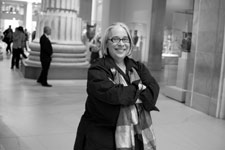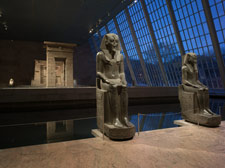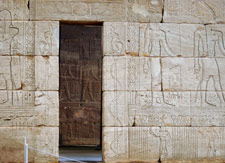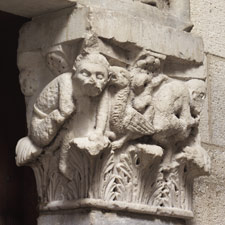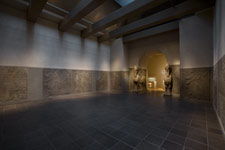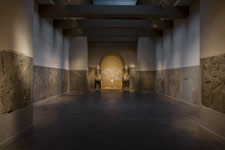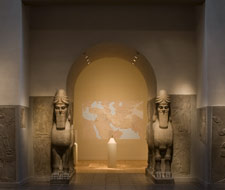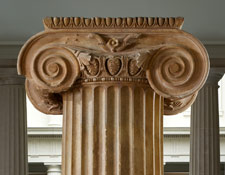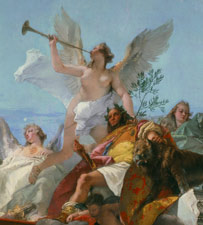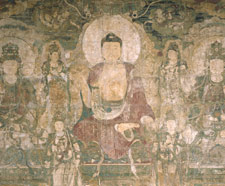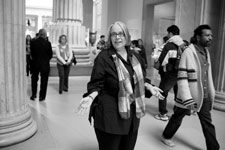New Connections appear every Wednesday. Sign up for a reminder.
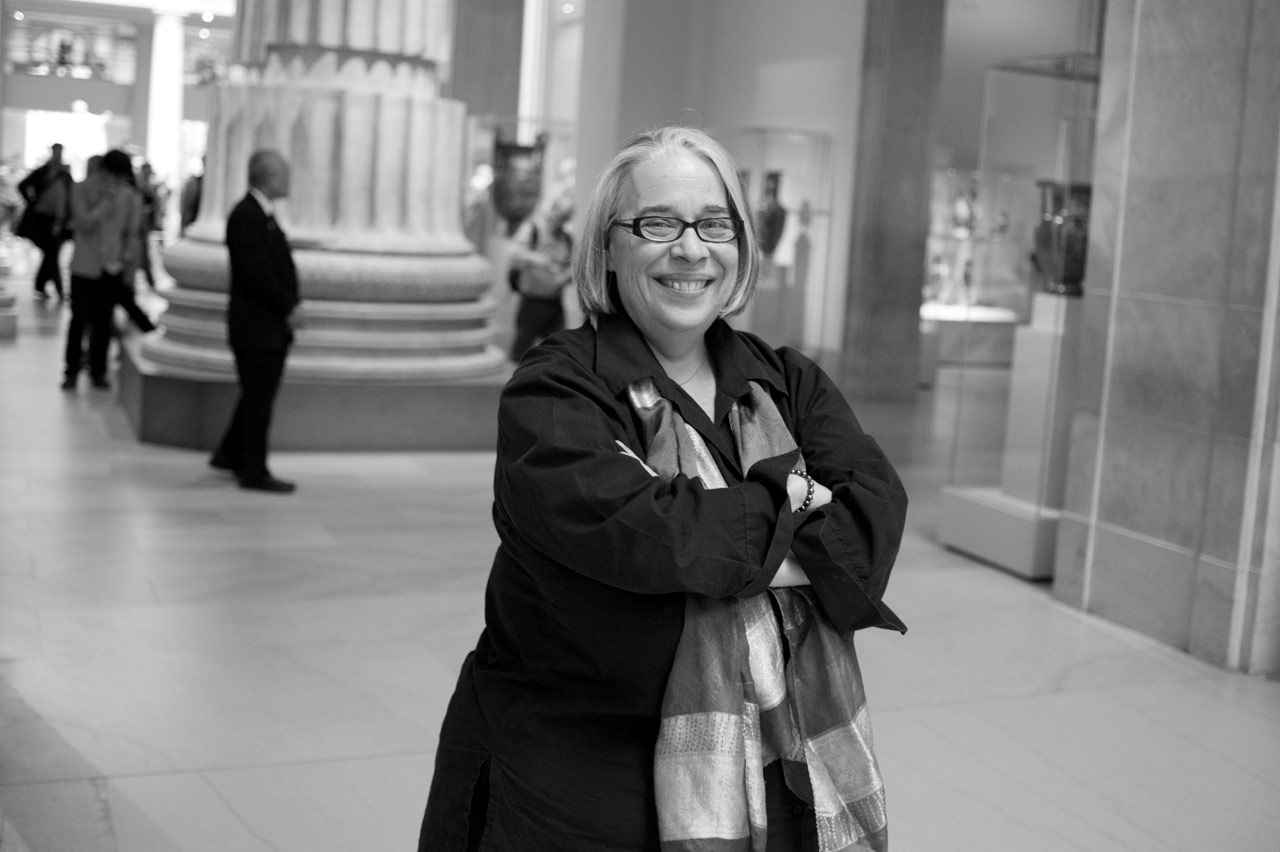 1280852
1280852 1280949
1280949 9291024
9291024 5811024
5811024 10111024
10111024 1280544
1280544 6891024
6891024 8921024
8921024 7261024
7261024 6811024
6811024 1280958
1280958 1280973
1280973 1280928
1280928 10241024
10241024 7161024
7161024 10241024
10241024 12801024
12801024 1280983
1280983 1280853
1280853 1280856
1280856 1075906
1075906 10241024
10241024 1280998
1280998 12801024
12801024 1280684
1280684 9261024
9261024 1280956
1280956 12221024
12221024 11131024
11131024 10241024
10241024 7661024
7661024 1280960
1280960 1280986
1280986 12371024
12371024 1280852
1280852
My name is Aileen Chuk, I'm the registrar at the Metropolitan, and my topic is "Physics."
I'm a failed physicist. I started out wanting to be a scientist, and I realized I was never going to be good at it. And yet
I've gone into the art world, and I use that perspective in almost everything I do.
A registrar is responsible for taking care of all the art in the collection.
Anything comes in or out of this museum: packing, shipping, transport, couriers
site-installations. Whenever you move anything, there's physics involved.
Things are created over various time periods with different technologies.
And yet the same basic rules of physics always apply
mass, size, scale, volume, tipping points. Those haven't changed over the millennia. It's an equalizer.
I see the art but the first thing I think about is, "How did they get it in here?"
The Temple of Dendur is a very large building, intact. I see that as not so challenging, because it was
in one place, we knew exactly how it was built, and we could deconstruct
each numbered block, bring it to the United States and reconstruct it. It's always helpful to have a diagram.
The Cloisters is a classic example of interpretive architecture.
Many of these monasteries were destroyed through religious persecution
and they were in fragments. They didn't come with a map.
Architecture's a way of humans putting themselves into scale.
When we went from mud huts to grandeur, we were going to make a statement. This
set of reliefs is from a capital that was 900 acres, with walls that were 120 feet thick
five miles long, in northern Iraq, one of the first civilizations.
These are humans saying, "We're here."
The Greeks also. The Sardis Column is originally fifty-six feet high. It is represented in our galleries by only a very small portion of it, the bottom and the Ionic capital at the top.
How did they make these with no technology? How did they install these? And that's what I have to do every day. Moving
artwork all around the world, you're not always going to have your fancy equipment. You're going to have to think as the ancients thought.
A ceiling by Tiepolo was part of an exhibition in Venice. So I was bringing
Tiepolos back to Venice. It was one of the most challenging things I've ever done, because they
don't have elevators in Venice. They have cobblestones, and our modern art-moving equipment doesn't work.
But a dowel works, and that you can trace back to the Egyptians. If in doubt, revert to the ancient methods. Science
is all about empiricism. It's what you can see. It has physical form. It's like a
facedown. Take a fifty-six-foot column, put me in front of it, and ask me to move it.
I can combine an interest in science, as an amateur, and
apply it on a daily basis. It's giving me problems
to solve. It's helping me
understand the very nature of things
on a very intimate level.
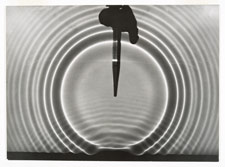 |
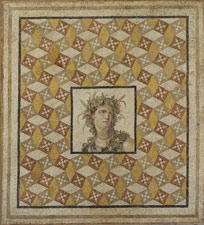 |
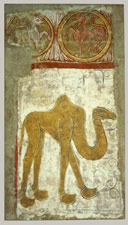 |
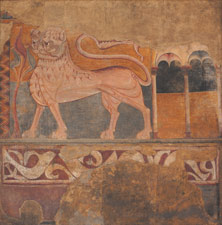 |
 |
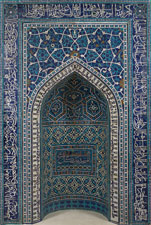 |
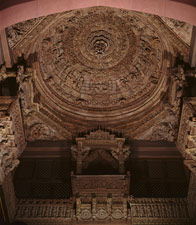 |
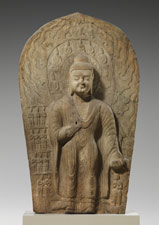 |
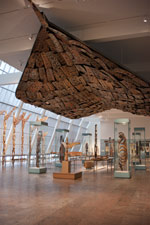 |
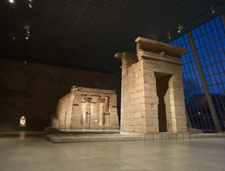 |
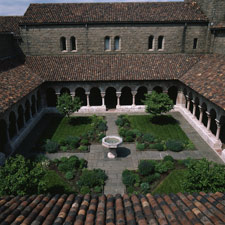 |
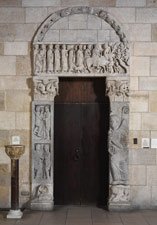 |
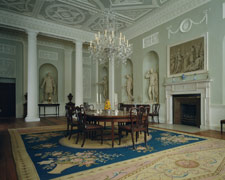 |
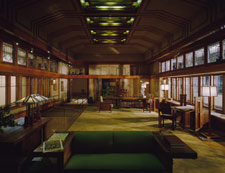 |
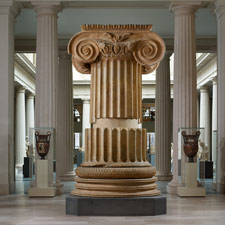 |
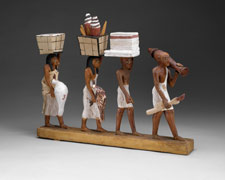 |
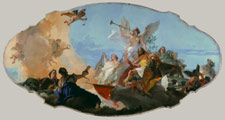 |
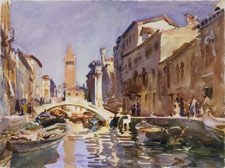 |
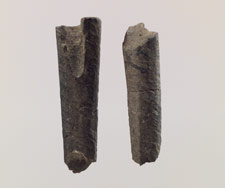 |
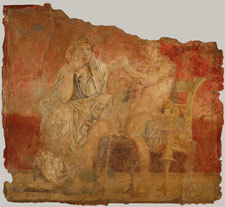 |
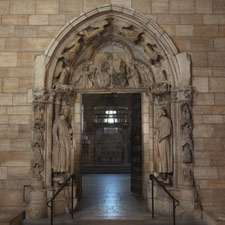 |
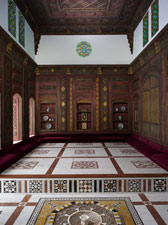 |
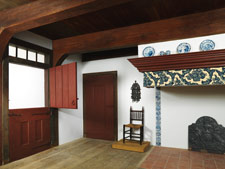 |
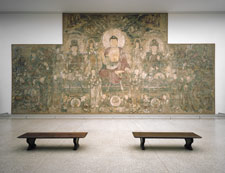 |
Works of art in order of appearanceLast Updated: June 22, 2015. Not all works of art in the Museum's collection may be on view on a particular day. For the most accurate location information, please check this page on the day of your visit. |
||
 |
[Expanding Circular Waves] 1950s Berenice Abbott (American) Gelatin silver print Gift of Ronald A. Kurtz, 1987 (1987.1184.46) © Berenice Abbott/Commerce Graphics Ltd. Inc. More information: The Collection Online Not on view
|
 PhotographsSecond Floor
PhotographsSecond Floor |
 |
So-called Antioch Mosaic second half of 2nd century; Late Antonine Roman Mosaic Purchase, Joseph Pulitzer Bequest, 1938 (38.11.12) More information: The Collection Online Not on view
|
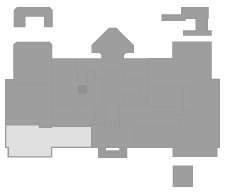 Greek and Roman ArtFirst Floor and Mezzanine
Greek and Roman ArtFirst Floor and Mezzanine |
 |
Wall Painting of a Camel mid-12th century From the hermitage of San Baudelio de Berlanga Fresco transferred to canvas The Cloisters Collection, 1961 (61.219) More information: The Collection Online Not on view
|

Medieval Art and The CloistersThe Cloisters at Fort Tryon Park |
 |
Lion from a Frieze after 1200 Spanish; Made in Burgos, Castile-León Fresco, mounted on canvas The Cloisters Collection, 1931 (31.38.1a) More information: The Collection Online Not on view
|

Medieval Art and The CloistersThe Cloisters at Fort Tryon Park |
 |
Panel: striding lion 604–562 b.c.; Neo-Babylonian period, reign of Nebuchadnezzar II Excavated at Wall of Processional Way, Babylon, Mesopotamia Glazed brick Fletcher Fund, 1931 (31.13.2) More information: The Collection Online Not on view
|
 Ancient Near Eastern ArtSecond Floor
Ancient Near Eastern ArtSecond Floor |
 |
Mihrab 1354 Isfahan, Iran Mosaic of monochrome-glaze tiles on composite body set on plaster Harris Brisbane Dick Fund, 1939 (39.20) More information: The Collection Online Not on view
|
 Islamic ArtSecond Floor
Islamic ArtSecond Floor |
 |
Architectural Ensemble from a Jain Meeting Hall last quarter of 16th century India, Gujarat, Patan Teak with traces of color Gift of Robert W. and Lockwood de Forest, 1916 (16.133,1,2) More information: The Collection Online Not on view
|
 Asian ArtSecond Floor
Asian ArtSecond Floor |
 |
Stele with Buddha Dipankara (Randeng) Northern Wei dynasty (386–495), dated 489–495 Shanxi Province, China Sandstone with pigment The Sackler Collections, Purchase, The Sackler Fund, 1965 (65.29.3) More information: The Collection Online Not on view
|
 Asian ArtSecond Floor
Asian ArtSecond Floor |
 |
Ceiling for a Ceremonial House 1970 and 1973 Kwoma painters, Mariwai village (active early 1970s) Sago petioles, paint Purchase, Rogers Fund and Mr. and Mrs. David Nash and Anonymous Gifts, 1975 (1975.372.1–.139) The Michael C. Rockefeller Memorial Collection, Purchase, Mrs. Gertrud A. Mellon Gift, and Mr. and Mrs. Alan Brandt Gift in Memory of Jacob J. Brandt, 1974 (1978.412.1576–.1698) More information: The Collection Online Not on view
|
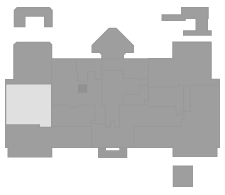 First Floor
First Floor |
 |
The Temple of Dendur Roman period, ca. 15 b.c. Egyptian; Dendur, Nubia Sandstone Given to the United States by Egypt in 1965, awarded to The Metropolitan Museum of Art in 1967, and installed in The Sackler Wing in 1978 (68.154) More information: The Collection Online Not on view
|
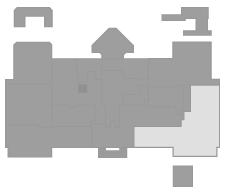 Egyptian ArtFirst Floor
Egyptian ArtFirst Floor |
 |
The Cuxa Cloister mid-12th century French or Spanish; From the Abbey of Saint-Michel-de-Cuxa (modern France) Marble The Cloisters Collection, 1925 (25.120.398,.399,.452) More information: The Collection Online Not on view
|

Medieval Art and The CloistersThe Cloisters at Fort Tryon Park |
 |
Portal from the Church of San Leonardo al Frigido ca. 1170–1180 Italian; Made in Tuscany White Carrara marble, grayish marble The Cloisters Collection, 1962 (62.189) More information: The Collection Online Not on view
|
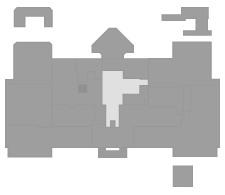 Medieval Art and The CloistersFirst Floor
Medieval Art and The CloistersFirst Floor
|
 |
Dining room from Lansdowne House, London 18th century (1765–68) Robert Adam (English) Wood, plaster, and stone Rogers Fund, 1931 (32.12) More information: The Collection Online Not on view
|
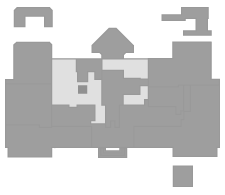 European Sculpture and Decorative ArtsFirst Floor
European Sculpture and Decorative ArtsFirst Floor |
 |
Living room from the Little House, Wayzata, Minnesota 1912–14 Frank Lloyd Wright (American) Purchase, Emily Crane Chadbourne Bequest, 1972 (1972.60.1) More information: The Collection Online Not on view
|
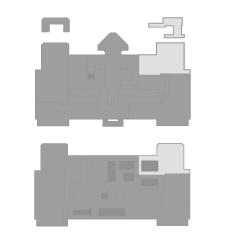 American Decorative ArtsFirst and Second Floors
American Decorative ArtsFirst and Second Floors |
 |
Ionic capital, torus (foliated base), and parts of a fluted column shaft from the Temple of Artemis at Sardis 4th century b.c. Greek, Lydian Marble Gift of The American Society for the Excavation of Sardis, 1926 (26.59.1) More information: The Collection Online Not on view
|
 Greek and Roman ArtFirst Floor and Mezzanine
Greek and Roman ArtFirst Floor and Mezzanine |
 |
Group of offering bearers Middle Kingdom, Dynasty 12, early reign of Amenemhat I, ca. 1981–1975 b.c. Egypt, Upper Egypt; Thebes, Southern Asasif, Tomb of Meketre (TT 280, MMA 1101), Serdab, MMA 1920 Plastered and painted wood, linen Rogers Fund and Edward S. Harkness Gift, 1920 (20.3.8) More information: The Collection Online Not on view
|
 Egyptian ArtFirst Floor
Egyptian ArtFirst Floor |
 |
The Glorification of the Barbaro Family, ceiling decoration ca. 1750 Giovanni Battista Tiepolo (Italian) Oil on canvas Anonymous Gift, in memory of Oliver H. Payne, 1923 (23.128) More information: The Collection Online Not on view
|
 European PaintingsSecond Floor
European PaintingsSecond Floor |
 |
Venetian Canal 1913 John Singer Sargent (American) Watercolor and graphite on off-white wove paper Purchase, Joseph Pulitzer Bequest, 1915 (15.142.10) More information: The Collection Online Not on view
|
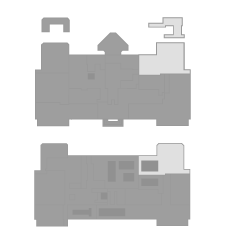 American Paintings and SculptureFirst and Second Floors
American Paintings and SculptureFirst and Second Floors |
 |
Two dowels from a chair (?) Middle Bronze Age–Old Assyrian Trading Colony, ca. 18th century b.c. Anatolia, probably from Acemhöyük Ivory Gift of Mrs. George D. Pratt, in memory of George D. Pratt, 1936 (36.70.37z7) More information: The Collection Online Not on view
|
 Ancient Near Eastern ArtSecond Floor
Ancient Near Eastern ArtSecond Floor |
 |
Man and woman seated side by side: From Room H of the Villa of P. Fannius Synistor at Boscoreale ca. 40–30 b.c.; Late Republican Roman Wall painting; Fresco Rogers Fund, 1903 (03.14.6) More information: The Collection Online Not on view
|
 Greek and Roman ArtFirst Floor and Mezzanine
Greek and Roman ArtFirst Floor and Mezzanine |
 |
Doorway from Moutiers-Saint-Jean ca. 1250 French Limestone with traces of polychromy The Cloisters Collection, 1932 (32.147) More information: The Collection Online Not on view
|
 Medieval Art and The CloistersFirst Floor
Medieval Art and The CloistersFirst Floor
|
 |
Damascus Room dated 1119 A.H. / 1707 a.d.; Ottoman Attributed to Damascus, Syria Wood, marble, stucco, glass, mother-of-pearl, ceramics, tile, stone, iron, colors, gold Gift of The Hagop Kevorkian Fund, 1970 (1970.170) More information: The Collection Online Not on view
|
 Islamic ArtSecond Floor
Islamic ArtSecond Floor |
 |
New York Dutch Room, Bethlehem, New York 1751 Emily Crane Chadbourne Trust, 2003 (NYDR.2003.1) More information: The Collection Online Not on view
|
 American Decorative ArtsFirst and Second Floors
American Decorative ArtsFirst and Second Floors |
 |
Buddha of Medicine Bhaishajyaguru (Yaoshi fo) Yuan dynasty, ca. 1319 China Water-based pigments over foundation of clay mixed with straw Gift of Arthur M. Sackler, in honor of his parents, Isaac and Sophie Sackler, 1965 (65.29.2) More information: The Collection Online Not on view
|
 Asian ArtSecond Floor
Asian ArtSecond Floor |
© 2011 The Metropolitan Museum of Art |
||
